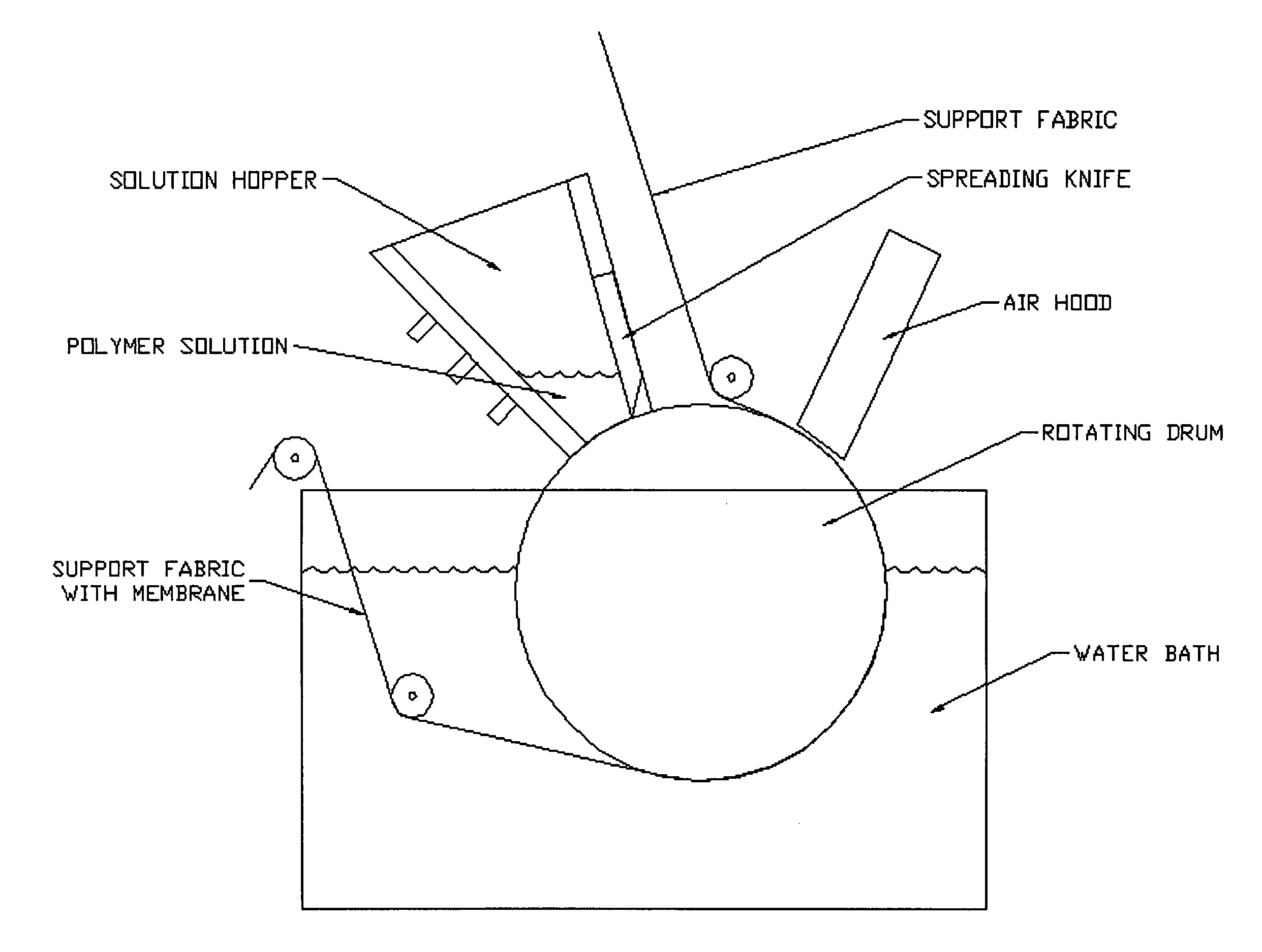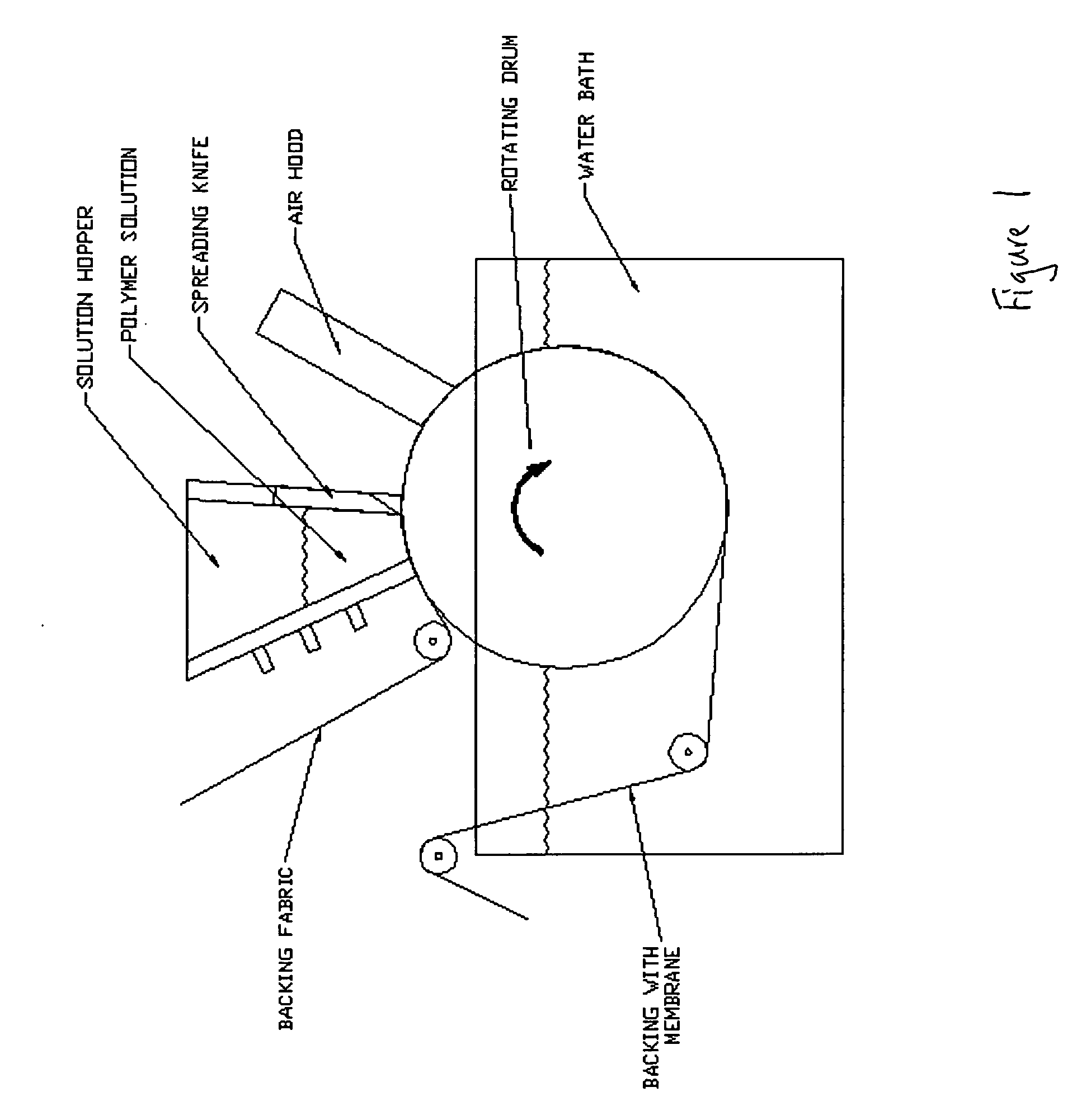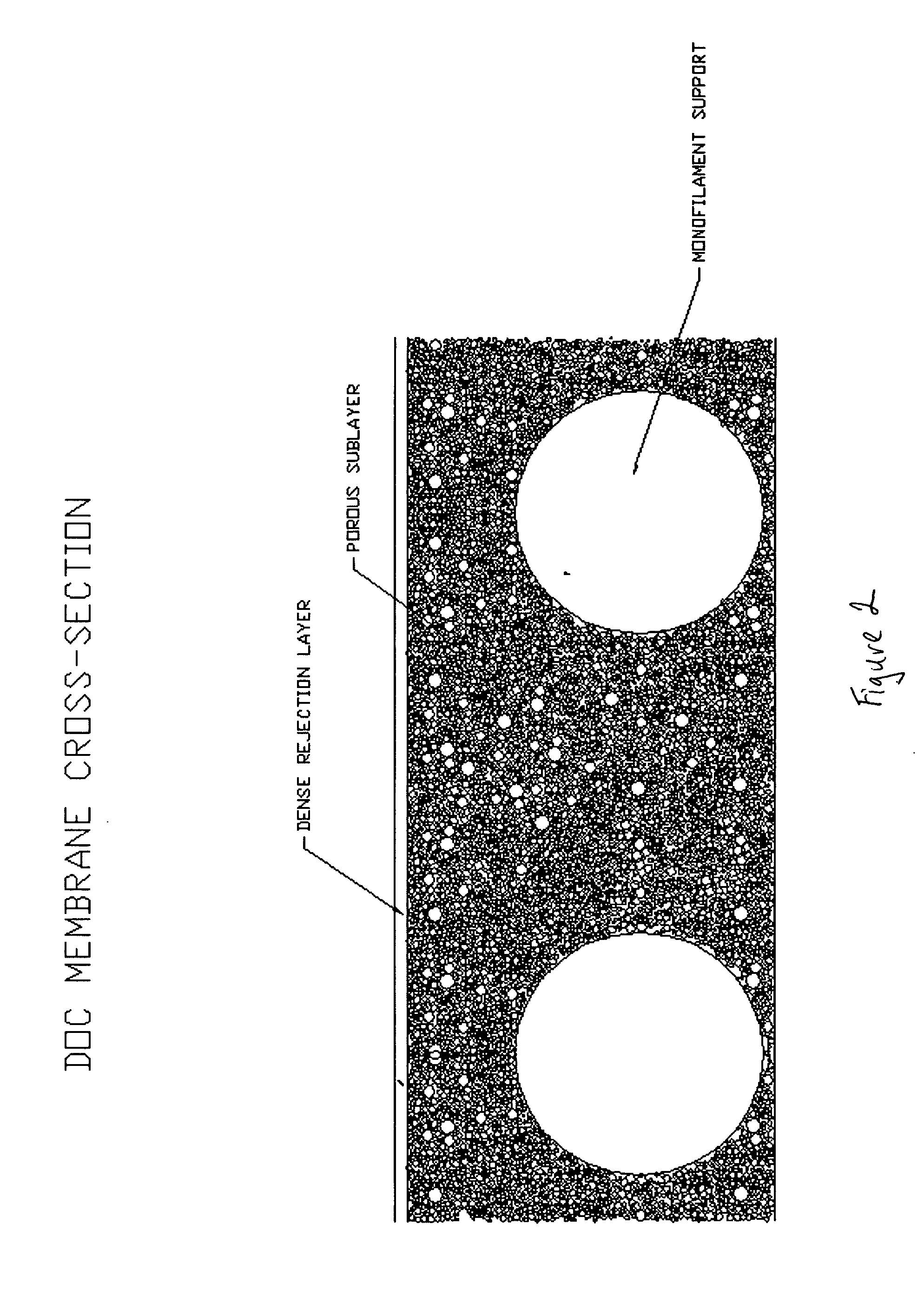Asymmetric forward osmosis membranes
a technology of forward osmosis and membrane, applied in the field of membrane formulation, can solve the problems of water resistance and water resistance, and achieve the effects of low diffusion resistance, high titer reduction, and lack of defects
- Summary
- Abstract
- Description
- Claims
- Application Information
AI Technical Summary
Benefits of technology
Problems solved by technology
Method used
Image
Examples
first embodiment
[0038] The immersion / precipitation process for making the inventive FO membranes provides first dissolving the membrane polymeric material in a water-soluble solvent (non-aqueous) system. Appropriate water-soluble solvent systems for cellulosic membranes include, for example, ketones (e.g., acetone, methyl ethyl ketone and 1,4-dioxane). Included in the water-soluble solvent systems are pore-forming agents (e.g., malic acid, citric acid, lactic acid and lithium chloride) and strengthening agents (e.g., agents to improve pliability and reduce brittleness, such as methanol, glycerol and ethanol). The membrane polymeric material is dissolved in the water-soluble solvent system to form a solution. In the first embodiment, the solution is then extruded onto a surface of a hydrophilic backing material. Preferably, an air-knife is used to evaporate some of the solvent to prepare the solution for formation of the skin layer. The backing material with solution extruded on it is then introduce...
second embodiment
[0040] In the second embodiment the solution is cast onto a rotating drum and an open fabric is pulled into the solution so that the fabric is embedded into the solution. The solution is then passed under the air knife and into the coagulation bath.
[0041] Typically, the membrane in the second embodiment has an overall thickness of 75 to 150 microns and the support fabric has a thickness from 50 to 100 microns. The support fabric preferably has over 50% open area.
[0042] The immersion / precipitation process forms an asymmetric membrane with a solid skin layer as a surface component, having about 5-15 micrometers in thickness. There is also a scaffold layer composed of the same polymeric material, wherein the scaffold layer is highly porous and allows diffusion of solids within the porous scaffold layer. The scaffold layer is created by the immersion / precipitation process and its porosity controlled by both the casting parameters and by the choices of solvent and ratio of solids of pol...
PUM
| Property | Measurement | Unit |
|---|---|---|
| thickness | aaaaa | aaaaa |
| thickness | aaaaa | aaaaa |
| thickness | aaaaa | aaaaa |
Abstract
Description
Claims
Application Information
 Login to View More
Login to View More - R&D
- Intellectual Property
- Life Sciences
- Materials
- Tech Scout
- Unparalleled Data Quality
- Higher Quality Content
- 60% Fewer Hallucinations
Browse by: Latest US Patents, China's latest patents, Technical Efficacy Thesaurus, Application Domain, Technology Topic, Popular Technical Reports.
© 2025 PatSnap. All rights reserved.Legal|Privacy policy|Modern Slavery Act Transparency Statement|Sitemap|About US| Contact US: help@patsnap.com



